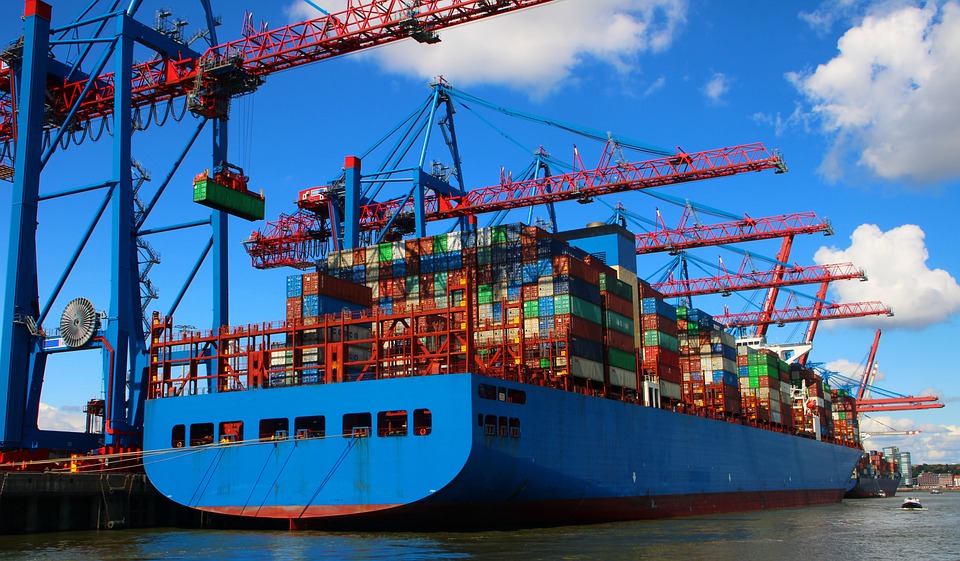“This success is good news for industry,” Jones said, “because the EU market for U.S. oak logs for veneer is worth $12 million annually.”
Finding alternatives to the fumigant methyl bromide is an acute need for USDA’s Animal and Plant Health Inspection Service (APHIS). Methyl bromide effectively treats commodities against a wide range of plant pests and diseases, and U.S. importers and exporters often rely on its use to conduct safe trade. However, it is also an ozone-depleting chemical, and an international treaty called The Montreal Protocol—which the United States signed in 1987—aims to phase out the production and use of methyl bromide and almost 100 other chemicals. The protocol’s goal is to protect and restore Earth’s ozone layer. The good news for industry and our planet’s ozone layer is that APHIS has made some recent—and significant—successes in finding alternatives.
The EU Accepts U.S. Hardwood Logs for Veneer
The European Union (EU) stopped accepting methyl bromide-treated oak logs with bark from the United States, and no oak logs with bark have shipped to the EU since January 2021. APHIS has been working hard on solutions.
“We made great progress with the EU for exported U.S. oak logs intended as veneer,” said John “Tyrone” Jones, APHIS’ Trade Director for Global Forestry Products. “The EU accepted APHIS’ systems approach using sulfuryl fluoride as a methyl bromide alternative.”
This agreement is also notable because it’s the first one that has dual treatment in the United States and in the EU. Stateside, it involves field selection of the logs and safeguarding and treating them. In the EU, the systems approach continues with safeguarding the logs, storing them under water, and heat treating them in a water vat.
“This success is good news for industry,” Jones said, “because the EU market for U.S. oak logs for veneer is worth $12 million annually.”
Bangladesh Eliminates Methyl Bromide Fumigation Requirement
Another recent success: Bangladesh’s government has removed a significant trade barrier for U.S. cotton exports by no longer requiring upon-arrival methyl bromide fumigation of U.S. baled cotton. The Bangladeshi government announced this change effective as of May 16, 2023.
APHIS formally requested Bangladesh remove the fumigation requirement in 2017, based on U.S. industry practices, supporting research, and risk analysis. Subsequently, representatives from APHIS and USDA’s Foreign Agricultural Service (FAS) in Dhaka and Washington engaged with Bangladeshi officials via meetings, letters, phone calls, and site visits to the United States, partnering with the U.S. cotton industry to provide scientific information and field demonstrations verifying that there is no risk of boll weevil on U.S. baled cotton.
Because of these successful negotiations, APHIS gained approval from Bangladesh’s Ministry of Agriculture to allow U.S. cotton to be exported to Bangladesh with a phytosanitary certificate and an additional declaration stating that the cotton is free from boll weevil.

“Removing the fumigation requirement is the result of decades of hard work by USDA and the U.S. cotton industry,” said Mark Davidson, Deputy Administrator for APHIS’ Plant Protection and Quarantine. “This important U.S. export market was valued at more than $475 million last year and has the potential to increase with this removal of the fumigation trade barrier.”
What made this international trade accomplishment possible is APHIS’ and the U.S. cotton industry’s battle against cotton pests like the boll weevil. Our national cooperative boll weevil eradication program is considered to be one of the most consequential agricultural programs in U.S. history due to its effectiveness, with Federal and State agencies and the cotton industry successfully eradicating this pest from more than 98 percent of U.S. cotton acreage.
Bangladesh is the world’s second-largest exporter of ready-made garments, and its garment industry relies on imported cotton, including high-quality, sustainably produced U.S. cotton. Bangladeshi importers were previously paying more than $1 million annually for fumigation of U.S. cotton.


Join the conversation!